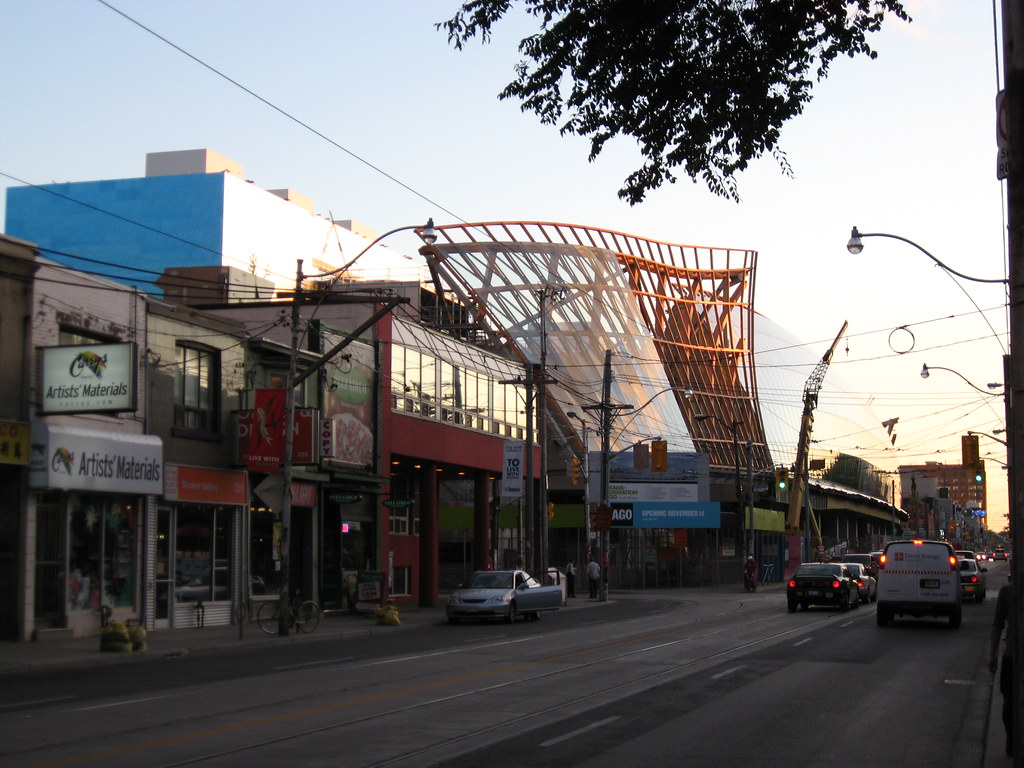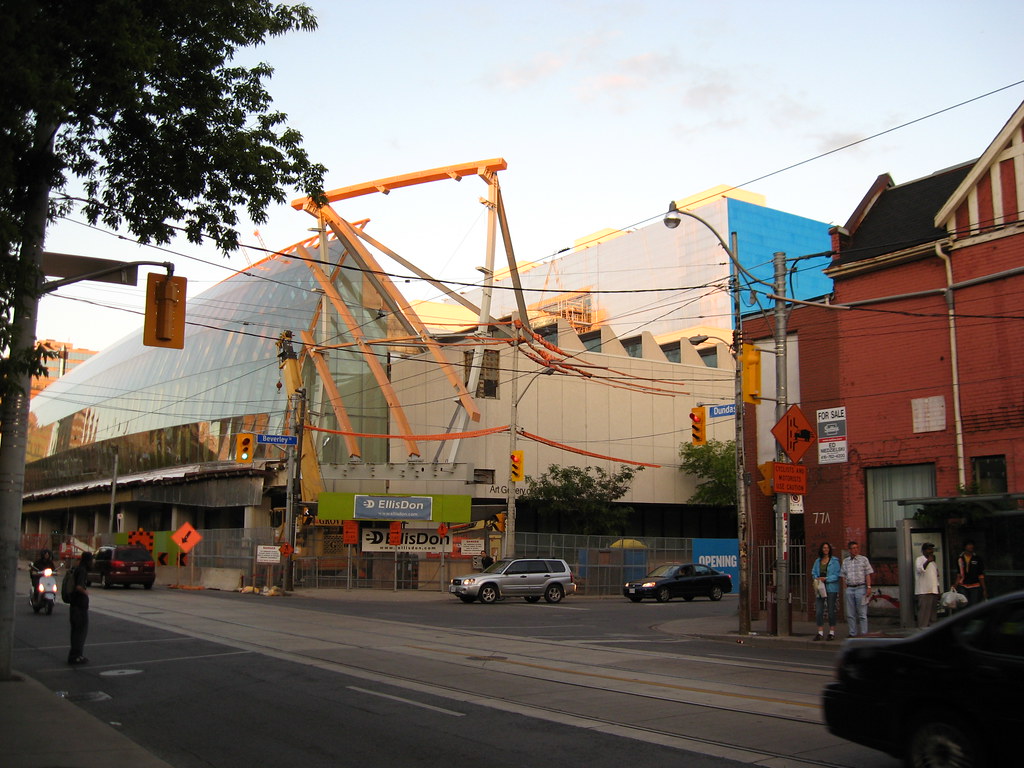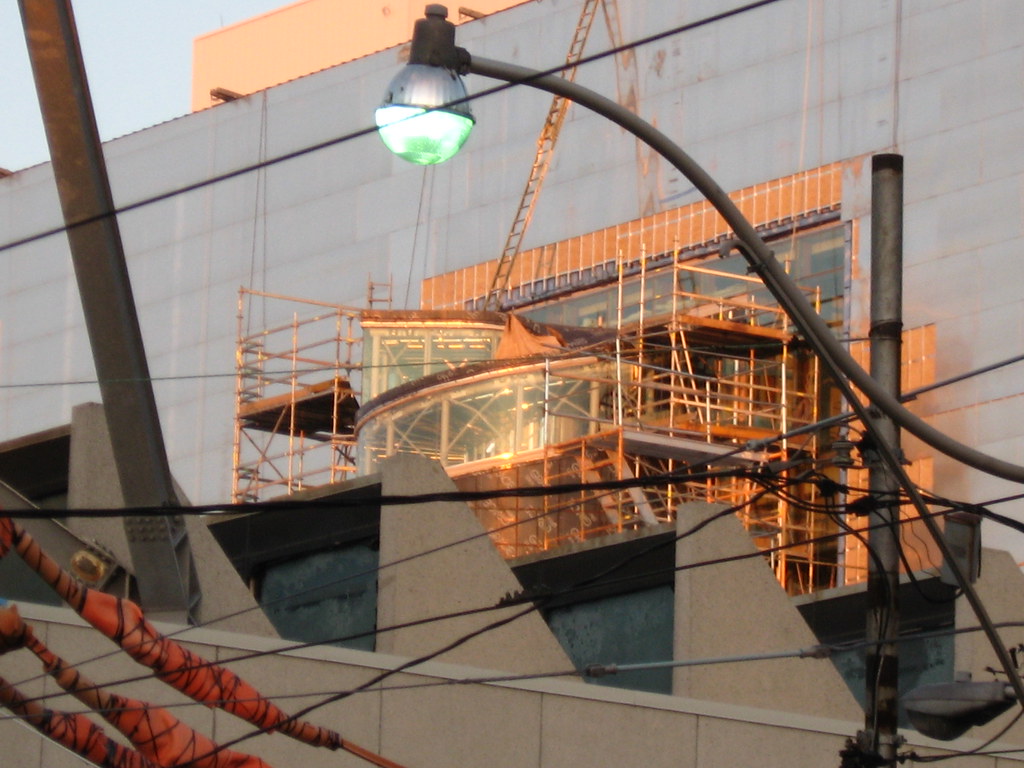from the Star...(note interesting comment by Gehry)
Lots of light puts focus on art at remade AGO
TheStar.com - Columnist - Lots of light puts focus on art at remade AGO
July 14, 2008
Christopher Hume
The Art Gallery of Ontario won't reopen until Nov. 14, but already it's clear Frank Gehry has provided more than an addition; this is a top-to-bottom remake.
Even venerable Walker Court, the indoor courtyard that sits at the heart of the AGO, has lost a ceiling and gained a glass roof. On Dundas St., the gallery has a new face. The main feature here, a gently curving glass "visor," extends from one end of the building to the other. This is Galleria Italia, sculpture atrium and viewing platform.
Though the cladding on the rear addition is titanium, a Gehry trademark, the gesture that appears again and again is the spiral, as in spiral staircase. The most dramatic example protrudes 13 metres from the south façade, offering spectacular views of Grange Park below, the city and Lake Ontario beyond.
Another circular staircase moves in an out of Walker Court, which will also be a display space for sculpture. The party room will be upstairs now. And as for the old Tanenbaum Sculpture Atrium, it has been reduced in size, reclad with Douglas fir and become all warm and cozy.
What's also becoming apparent as areas of the new building are completed and handed over to curators is the sheer extent of the late Ken Thomson's $300 million contribution. His collection will occupy no less than 28 galleries. In some cases, this will mean work by some artists is displayed in more than one location.
Curators have been installing the artwork with an eye to what the AGO's Linda Milrod calls "adjacencies." That means, for example, putting Thomson's Lawren Harrises next to the gallery with the AGO's Harrises.
One level below the entrance, which has been moved west along Dundas St. to align with Walker Court, Thomson's model ship collection will be exhibited. This is a genre the AGO has never pursued, but it could well become one the most popular destinations.
Unlike Daniel Libeskind's Crystal at the Royal Ontario Museum, which sacrifices large amounts of interior space in the name of architecture, Gehry's AGO is a facility for the viewing of art. That means lots of light – indeed, light is the subtext to the whole project – as well as straight walls and right angles.
Gehry makes no bones about his desire to do a free-standing building in Toronto. "It's hard to remodel a building, especially a Barton Myers building," he says. "And you rebuffed me for the opera house."
It should have been on the waterfront – that really would have been something.
As it is, Toronto got Gehry at his most restrained. Yet it is precisely a project such as this that reveals the sheer brilliance of his architecture. This is Gehry as problem-solver, not icon maker. Visitors will always know how to get in and out, where they are and where the art is. The collection will be exhibited spectacularly, bathed in light levels unseen since the roof was constructed.
Gehry also talks about the AGO as an urban project. "You respect your neighbours," he says, "even when they don't look like what you want them to look like."
One thing's for sure: the AGO will make all its neighbours look better, even Will Alsop's remarkable Ontario College of Art and Design next door. "I raised my building to meet Alsop's," Gehry says. "I hope he likes it."
When complete, the AGO and OCAD will turn this corner into one of Toronto's most engaging, a spot every visitor has to see.
Torontonians, on the other hand, can savour the slow unfolding of the building over time. There's enough going on here to keep us coming back, over and over again.
Christopher Hume can be reached at
chume@thestar.ca.












